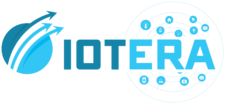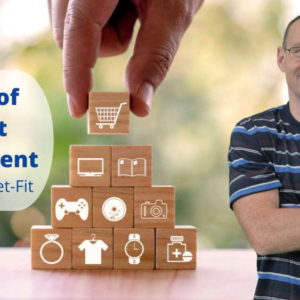Introduction In the realm of smart agents, prompts function as...
Read MoreCrafting successful products is a challenging and pivotal role, often regarded as an art form, that product management plays. The ultimate objective of a product manager is to develop exceptional products that meet the needs of a target market.
Regardless of whether it is a fledgling startup or a massive corporation, the fundamental principles of what to do and what not to do remain the same. The only notable distinctions are the available resources and the mindset.
There are guidelines of course and methodologies that each practitioner should know. But eventually it is up, to you to absorb what you learn, and follow your own path to success
Along the years as a product manager, I have assembled a check-list of directive and guidelines, that I strive to follow when managing a product. I have outlined them in the following sections and in this video.
1. Do your research first to find a valid Product-Market-Fit
It’s easy to become enamored with your own idea and believe that it’s exactly what the world has been waiting for. Oftentimes, the idea springs from personal need, the needs of someone close to you, or the organization you work for. However, it’s important to remember that even if the idea is groundbreaking, someone else has probably already thought of it.
Furthermore, it’s crucial to realize that you are not the end-user. Your clients are the individuals who will actually use and purchase your product or service. Therefore, it’s essential to invest significant time and effort into research, including speaking with potential clients to determine if there is a Product-Market-Fit. This means identifying whether there are enough clients who have the problem you’re attempting to solve and are willing to pay for your solution.
2. Talk with your potential clients as early-as-possible to understand their real needs.
While conducting extensive research is important, speaking with potential clients is truly invaluable. The objective is to gain firsthand knowledge of your clients’ true needs. You should conduct interviews with your clients and build a comprehensive client persona. Often, you’ll be surprised to learn that your assumed clients are not your actual clients.
Through these conversations, you may uncover that your clients have vastly different needs than what you initially assumed. Therefore, it’s essential to have an intimate understanding of who your actual clients are and what their true needs are. This is a crucial milestone in your journey toward achieving Product-Market Fit, and it’s an activity that should be repeated regularly throughout the lifecycle of your product.
3. Don’t ask your clients for solutions.
When conducting interviews with your clients, it’s important to focus on their needs rather than specific features. Asking about features can lead to confusion and distract from your primary goals and priorities. Instead, inquire about your clients’ pain points, initially without discussing your solutions or product. This will allow you to gain a deeper understanding of their needs, which you can then use to design an effective solution.
Once you’ve designed a solution, it’s important to return to your clients and request feedback or conduct usability testing. This will provide valuable insights into the effectiveness of your solution and help you identify areas for improvement. By continually seeking input from your clients, you can ensure that your product remains aligned with their needs and continues to provide value over time.
4. Hire the right team – capable, passionate, and diversified.
One of the leading causes of failure in both startups and large organizations is having the wrong team. I have made this mistake myself and seen others do the same…
Choosing team members based on friendship rather than skill, selecting people who resemble ourselves to avoid diversity, and opting for mediocre talent to save time, effort, and cost are common errors.
Instead, you should focus on selecting highly skilled and capable individuals with relevant experience for the tasks at hand. The team should be diverse, with members possessing a range of skills that complement the needs of the product, such as design, technical development, or marketing.
Most importantly, team members should be passionate about the product and the work they’re doing, so they remain committed even when things go wrong. This is crucial because a person’s true character is often revealed during difficult times.
5. Be Agile and operate in a Lean methodology.
It’s essential to prioritize your product features and release Minimum Viable Products (MVPs) as soon as possible and as frequently as possible. Identify your product innovator stakeholders, early clients who are willing to actively participate in the product development cycle and provide feedback.
Establish short research, development, and testing cycles, and release to your innovators. Pivot your product features based on the feedback you receive, and be receptive to changes. Be dynamic and quick to act based on the intel you gather. By implementing this process, you can continually refine your product, ensure that it remains aligned with the needs of your clients, and respond rapidly to changes in the marketplace.

6. Continually monitor your assumptions – if possible, without investing R&D efforts.
It’s crucial to recognize that assumptions are not facts until they are tested and proven in the field. Often, we become too attached to our beliefs without concrete evidence to support them. To avoid this trap, you need to monitor and test your assumptions, whether they relate to client needs or product features. Seek feedback from advisors or potential clients outside your immediate circle who can offer valuable insights without being biased towards your product.
Research and development efforts can be extremely expensive and are typically based on estimates rather than proven data. Therefore, you should aim to question assumptions first and then develop solutions, rather than developing solutions and then questioning their validity. By adopting this approach, you can save significant time, effort, and cost by focusing only on features that are truly valuable to your clients.
7. Synchronize your R&D, marketing, and sales efforts.
Product development is a complex process that requires coordination between the business and technical sides of the project. For startups, it’s particularly challenging to launch a product without first creating brand awareness and generating interest from potential clients.
Marketing and business development are critical components of the product development process and require significant time and effort, especially when you don’t have a large budget. Therefore, you should start your marketing and business journey as soon as possible. There are ways to promote your product without spending a lot of money, such as inbound and content marketing. These approaches can help you generate leads, build brand awareness, and engage with potential clients in a cost-effective way.
8. Create usable and simple experiences, even when the underlying technology is complicated.
Nowadays we are bombarded with content and with new experience. People lack the time and the patients to pay attention – if you do not provide a catchy something in a few second, you’ll lose your potential prospects. Remember that you are always comporting with others on the time of your clients…
Therefore, you MUST invest time and efforts on simplifying your user experience so that the learning curve of your clients will be as-quick-as-possible. Use out-of-the-box methods, gamification, tutorials and enjoyable experiences to keep your clients engaged and hooked to your product.
Marketing and business development takes time, especially when you don’t have the required budget. You should therefore begin your marketing and business journey as-soon-as-possible. There are ways to promote your product without high monetary expenditures by doing in-bound and content marketing
9. Learn from your competitors but do not fear them.
It is important to keep in mind that imitating your competitors is not enough to achieve long-term success. Your product must have its own unique selling proposition that differentiates it from the competition.
Focus on creating value for your clients and building a strong brand reputation that will make it difficult for competitors to copy you. Keep innovating and improving your product to stay ahead of the competition. Ultimately, your goal should be to become the industry leader, not just to keep up with the competition.
10. Allocate enough resources for testing, integration, and deployment.
According to the general rule, integration and testing can consume up to 80% of development efforts, yet many developers tend to prioritize the more enjoyable aspects of development over testing. However, testing is crucial in differentiating a hobby project from a business project. One effective approach is to adopt TDD, or Test-Driven-Development methodology, where testing is an integral part of the development process rather than an afterthought.
This can result in a better product with fewer bugs and more balanced development cycles. Conducting numerous integration cycles may be challenging, as it requires the entire development team, but it can foster strong team bonds and accelerate the development process. Additionally, it’s important to keep in mind that deployment is a complex process, so it’s advisable to include development, staging, and deployment in each of the major sprints.
Conclusion and summary
Effective product management is a combination of art, skill, knowledge, and experience. Implementing the guidelines and directives discussed in this article can lead to a significant improvement in product management quality and success rates.
In upcoming articles, we will delve deeper into each directive, providing detailed examples and case studies to help you apply them to your own product management strategies. Stay tuned for more insights and practical advice.
More Posts
Unleashing the Future: Crafting Your Very Own Smart Agents
Introduction As we witness the rapid evolution of artificial intelligence...
Read MoreMy first commandment for product manager – Product-Market-Fit
My first commandment for product manager Product-Market-Fit Last Updated: 16...
Read More


